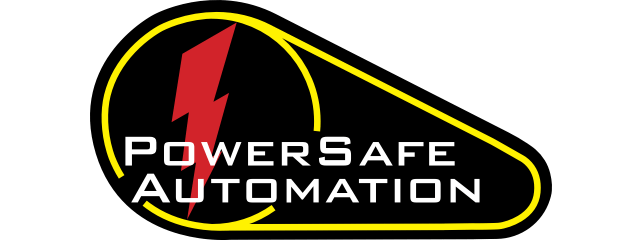Building Better Flow on the Shop Floor
In today’s competitive industrial landscape, lean manufacturing isn’t just a philosophy—it’s a necessity. Manufacturers are under constant pressure to increase efficiency, reduce waste, and protect workers. One of the most effective yet overlooked tools in achieving lean flow is the use of custom workstations. These tailored solutions enable seamless process flow, boost operator productivity, and support safety compliance. This blog explores how custom workstations—designed and implemented by experts like Power Safe Automation—transform manufacturing environments from chaotic to streamlined.
What Is Manufacturing Flow?
Manufacturing flow refers to the systematic movement of materials, components, and labor through various stages of production. A well-optimized flow minimizes interruptions, reduces motion waste, and ensures smooth transitions between workstations. In lean systems, the goal is to create a “pull” environment where each step in the process is triggered by demand, reducing bottlenecks and inventory buildup. Achieving this requires more than just moving equipment—it requires a well-orchestrated design that aligns workstations with operator needs and process timing.
Challenges in Traditional Manufacturing Layouts
Many manufacturing facilities still operate with legacy layouts that are poorly suited to today’s lean demands. Some common pain points include:
-
Overcrowded workspaces
-
Unnecessary walking or reaching
-
Improper material presentation
-
Lack of standardized workflows
These inefficiencies lead to downtime, defects, and employee fatigue. Even small delays in workstation setup can lead to significant losses in output over time. Without customization, most workstations are built generically and fail to address the specific needs of each operation.
What Are Custom Workstations?
Custom workstations are engineered setups designed specifically for the tasks, operators, and materials they support. Unlike one-size-fits-all benches, they are tailored to optimize:
-
Tool placement
-
Material delivery
-
Ergonomics
-
Safety features
-
Mobility and adjustability
Custom stations are built using modular aluminum framing, lean accessories (e.g., flow racks, parts bins, monitor mounts), and integrated power/data options. They’re often used in assembly, inspection, packaging, and testing stations across automotive, food & beverage, aerospace, and consumer goods sectors.
Benefits of Custom Workstations for Lean Flow
1. Reduced Motion and Transportation Waste
By positioning materials and tools within easy reach, custom workstations eliminate excessive walking, reaching, and searching—improving cycle times.
2. Ergonomic Efficiency
Workstations can be designed for standing, sitting, or adjustable use, reducing operator strain and improving focus.
3. Faster Line Balancing
Custom stations allow for easy reconfiguration to meet takt time targets across different SKUs or batch sizes.
4. Enhanced Safety
With integrated guarding, lighting, and cable management, custom setups support compliance with OSHA and ANSI standards.
5. Lean Inventory Integration
Flow racks and FIFO lanes support lean inventory practices, improving material replenishment and reducing overproduction.
Case Study: Power Safe Automation’s Lean Workstation Transformation
One major automotive supplier approached Power Safe Automation to address bottlenecks in their subassembly line. The existing workbenches were fixed, overcrowded, and inconsistent between shifts. Power Safe designed a series of modular custom workstations that:
-
Included flow racks with part bins within arm’s reach
-
Integrated pneumatic tool rails and ergonomic lighting
-
Used lockable casters for mobility during line changes
Results:
-
22% reduction in assembly cycle time
-
37% fewer ergonomic safety complaints
-
17% improvement in first-pass yield within 60 days
Design Principles for Lean Workstation Layouts
1. Process Mapping First
Start with a spaghetti diagram and value stream map to eliminate waste and determine optimal flow paths.
2. Right-Sizing the Station
Avoid oversized benches—design for the task, not the available floor space.
3. Operator Input Matters
Involve frontline employees in the design process. Their input on tool placement and reach zones ensures better adoption.
4. Standardization with Flexibility
Use common components and framing systems that allow easy updates without full rebuilds.
5. Safety Integration
Include ergonomic mats, guarding, lighting, and signage in the initial design—not as afterthoughts.
Integrating Custom Workstations into Your Facility
Rolling out new workstation designs across a facility requires strategic planning:
-
Pilot a prototype in one cell
-
Collect cycle time and ergonomic data
-
Compare KPIs before and after
-
Train operators on new configurations
-
Expand gradually based on results
Power Safe’s turnkey solutions include on-site assessments, 3D modeling, installation, and post-deployment support to ensure a smooth transition.
Safety and Ergonomics in Custom Workstation Design
A custom workstation is only as effective as it is safe. Top ergonomic and safety considerations include:
-
Proper working height to avoid bending or shoulder stress
-
Anti-fatigue mats for standing stations
-
Task lighting to reduce eye strain
-
Clear sightlines and signage for safe part transfer
-
Guarding or interlocks for stations near moving equipment
Power Safe integrates ANSI/OSHA best practices into every design, ensuring the workstations comply with both legal and ethical safety standards.
ROI of Custom Workstations in Lean Manufacturing
Investing in custom workstations yields returns through:
-
Labor cost savings via faster cycle times
-
Reduced workplace injuries lowering insurance premiums
-
Improved product quality due to better workflow and ergonomics
-
Increased throughput by eliminating material movement delays
Many facilities see a full return on investment in less than 12 months. When paired with lean training and 5S programs, custom workstation upgrades can become a cornerstone of operational excellence.
Key Takeaways and Implementation Checklist
Key Takeaways
-
Manufacturing flow is crucial for lean success and workplace safety.
-
Off-the-shelf workstations can’t match the efficiency of custom setups.
-
Ergonomics and safety should be designed in—not bolted on.
-
Custom workstations increase productivity, reduce waste, and improve operator morale.
Implementation Checklist
Conduct a workflow and ergonomic assessment
Identify bottlenecks and excessive operator motion
Map tasks to workstation zones
Select modular components for adjustability
Consult with Power Safe for expert design and integration
Lean Starts at the Station
Whether you're launching a lean initiative or refining a world-class operation, the humble workstation plays an outsized role in your success. Don’t settle for outdated benches and inefficient layouts. Partner with Power Safe Automation to design and implement custom workstations that transform your flow, protect your people, and maximize your profit.



